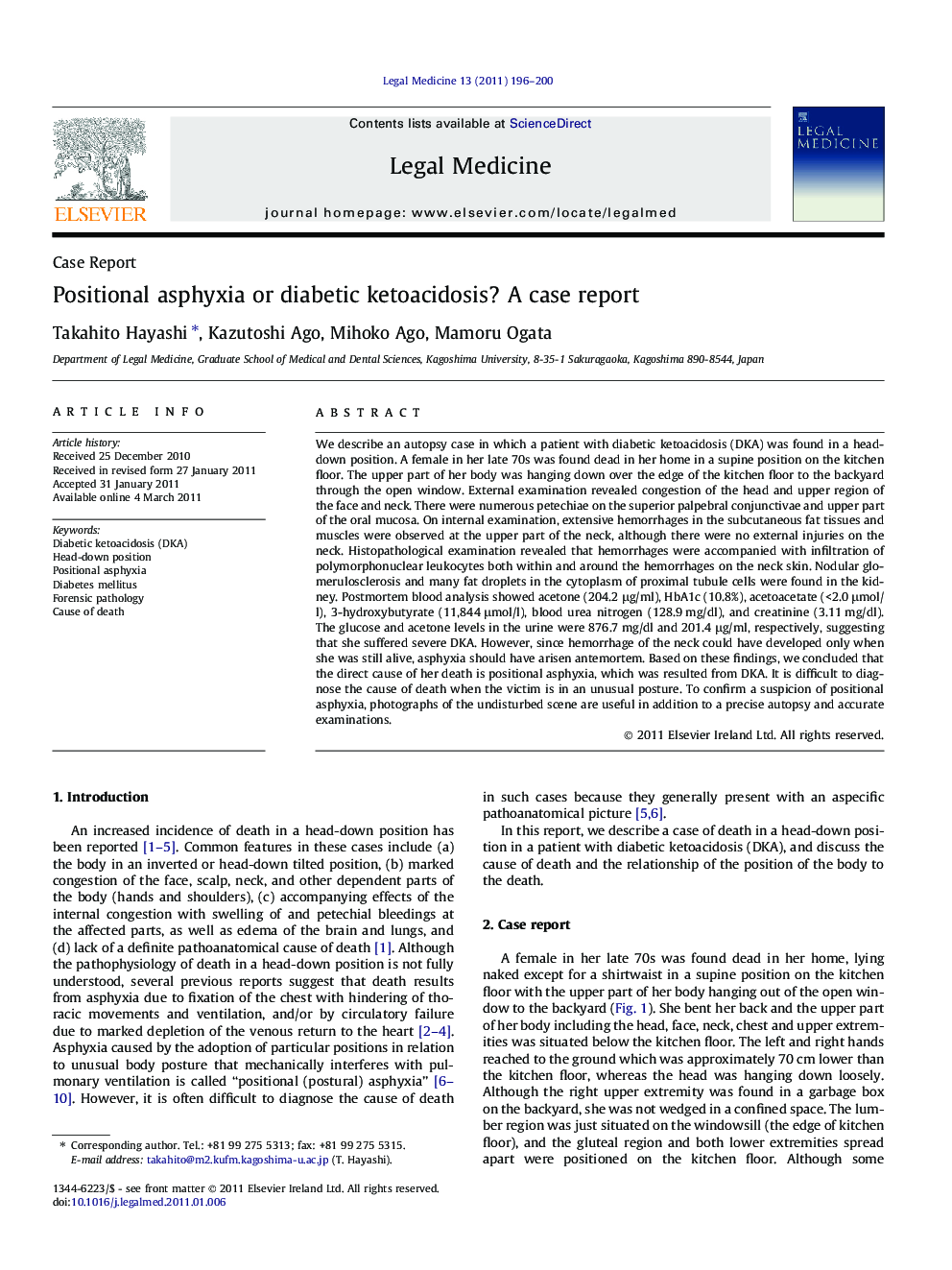| Article ID | Journal | Published Year | Pages | File Type |
|---|---|---|---|---|
| 103784 | Legal Medicine | 2011 | 5 Pages |
We describe an autopsy case in which a patient with diabetic ketoacidosis (DKA) was found in a head-down position. A female in her late 70s was found dead in her home in a supine position on the kitchen floor. The upper part of her body was hanging down over the edge of the kitchen floor to the backyard through the open window. External examination revealed congestion of the head and upper region of the face and neck. There were numerous petechiae on the superior palpebral conjunctivae and upper part of the oral mucosa. On internal examination, extensive hemorrhages in the subcutaneous fat tissues and muscles were observed at the upper part of the neck, although there were no external injuries on the neck. Histopathological examination revealed that hemorrhages were accompanied with infiltration of polymorphonuclear leukocytes both within and around the hemorrhages on the neck skin. Nodular glomerulosclerosis and many fat droplets in the cytoplasm of proximal tubule cells were found in the kidney. Postmortem blood analysis showed acetone (204.2 μg/ml), HbA1c (10.8%), acetoacetate (<2.0 μmol/l), 3-hydroxybutyrate (11,844 μmol/l), blood urea nitrogen (128.9 mg/dl), and creatinine (3.11 mg/dl). The glucose and acetone levels in the urine were 876.7 mg/dl and 201.4 μg/ml, respectively, suggesting that she suffered severe DKA. However, since hemorrhage of the neck could have developed only when she was still alive, asphyxia should have arisen antemortem. Based on these findings, we concluded that the direct cause of her death is positional asphyxia, which was resulted from DKA. It is difficult to diagnose the cause of death when the victim is in an unusual posture. To confirm a suspicion of positional asphyxia, photographs of the undisturbed scene are useful in addition to a precise autopsy and accurate examinations.
